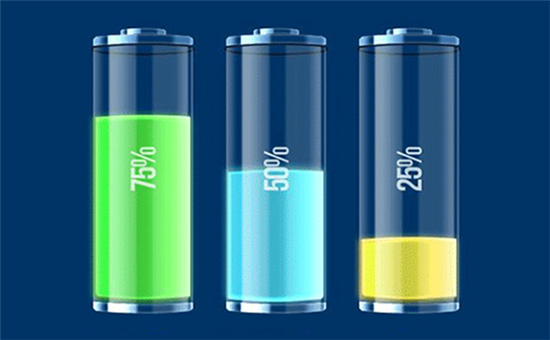Cathode Materials for Lithium Ion Batteries Review – Comparison and Care
Mar 06, 2020 Pageview:948
The current world is rapidly changing, and just like society and culture evolve, technology grows at an even faster pace. On this matter, the development of new techniques and refining of materials is highly important not only to be able to be more efficient in different areas of life but also to find new ways to take care of the planet.
This is where the action of batteries comes along. Finding and developing new kinds of power sources is highly relevant to expand the renewable power sources known by people.
However, a lot of people don’t know or don’t understand how batteries work. This is mainly due to the fact that most of us don’t even know what their core parts are, therefore, we can’t understand how they actually function.
Regarding this, it’s important to know that cells or batteries are formed by three main components or elements: cathode, anode, and electrolyte. Here are some short explanations of each one:
1)Anode: this is the element that takes care of reducing its electron charge, releasing these elements to the circuit. At the same time, it oxidizes the electrochemical reaction. The process with which all of this occurs gives the anode the name of negative electrode.
2)Cathode: contrary to the aforementioned element, this is the positive electrode, which acquires the previously cited electrons that come from the electrochemical reaction.
3)Electrolytes: these are also opposed to the other two, because they work as a medium, providing the transport to ionic mechanisms that happen between the cathode and anode on a cell.
Because of the aforementioned characteristics, it’s more than evident that batteries have three main elements that make the energy conduction possible. Knowing these aspects is important to understand the way in which cells give life to a lot of vehicles and services.
This acquires even further relevance when we stop to think about how many things are controlled by the power these days. Therefore, finding new ways to optimize the way in which anodes, cathodes, and electrolytes is important to develop new technologies.
Are cathode materials the same as anode materials?
No, they are not. Both cathode materials and anode materials can be found in batteries because they’re essential elements that form them; however, they’re completely different from one another and from electrolytes, which are the other elements that can be found on cells.
It’s quite frequent to be unaware of the differences between anodes and cathodes, especially because their names are unusual terms that aren’t frequently used in day-to-day conversations. Because of this, it’s important to know some specific aspects of the difference between these two, because they can create some confusion.
As a matter of fact, cathodes and anodes are not only not the same – they’re completely opposite in electrochemical reaction, which is why it’s so important to know the theoretical differences between them; so, it can be understood the way in which they react on batteries.
Understanding the differences between one term and another, as we said, will allow the comprehension of how the batteries work internally, therefore; the knowledge of how to artificially produce energy with a series of electrochemical reactions.
What are the differences between cathode and anode materials?
The main difference between anode materials and cathode materials is the fact that the first ones are the negative electrodes, which release electrons; and the second ones are the positive electrodes, which receive those electrons.
In other words, while anodes give up electrons, anodes receive them, which allows a direct way of communication between the two elements that make the battery action possible. These two, at the same time, also need the action of the electrolytes, which act as a bridge between them.
Other important differences between anodes and cathodes are the fact that anodes have a high coulumbic output, whereas cathodes are stable when they come in contact with the electrolyte. At the same time, while anodes are very efficient at reducing agents, cathodes are the best oxidizing agents.
Despite having a lot of differences, especially in the specific way in which they act on batteries; anodes and cathodes do have things in common. For example, they both need the action of the electrolyte in order to be able to communicate with each other, because said element works as a mediator between them; providing the needed transport for the ions on the process inside the cell.
Another thing they have in common is the easiness with which they’re made because their fabrication is usually pretty simple. Also, on the economic matter, they are both low-cost materials, which puts them on an important scale of materials needed to provide energy sources.
Finally, it’s necessary to point out that while they have some few things in common, most of the elements between anodes and cathodes are dramatic differences; which is also exemplified by the materials used for this specific action. While Lithium and Zinc are often used as anodes, metallic oxides tend to be used as cathodes.
How do you care for cathode and anode of lithium-ion batteries?
Now that you know well how batteries work on the inside, it’s important to take into account that there are a few things you can do if you want to extend their life. Although there’s a lot of discussion and publicity on how to make your battery power last longer, there’s no much conversation on how to properly take care of your cells, which is why we’ve brought some tips for you.
-Rather than carrying a spare, remember to buy the best capacity lithium-ion batteries that you can, because they’ll always offer you the best power source.
-Maintain all your batteries on a room temperature: high temperatures are one of the most dangerous things that can happen to a lithium-ion battery, so keep them safe.
-Avoid full discharges of the batteries, but allow partial ones: this is a tip especially important for lithium batteries because they include safety measures so that the cell won’t turn on again if it’s completely discharged. Don’t let this happen and take the needed actions before it does.
Now that you know the basics of how batteries work and some tips on how to take care of them; take this information into account the next time you own a lithium-ion battery and make sure you’re doing all the necessary actions to make them last.
- Prev Article: Lipo Battery Bulging - Meaning and Solution
- Next Article: Lithium Polymer Motorcycle Battery - Jump-starting and Buying
Leave Message
Hottest Categories
-
Hottest Industry News
-
Latest Industry News












